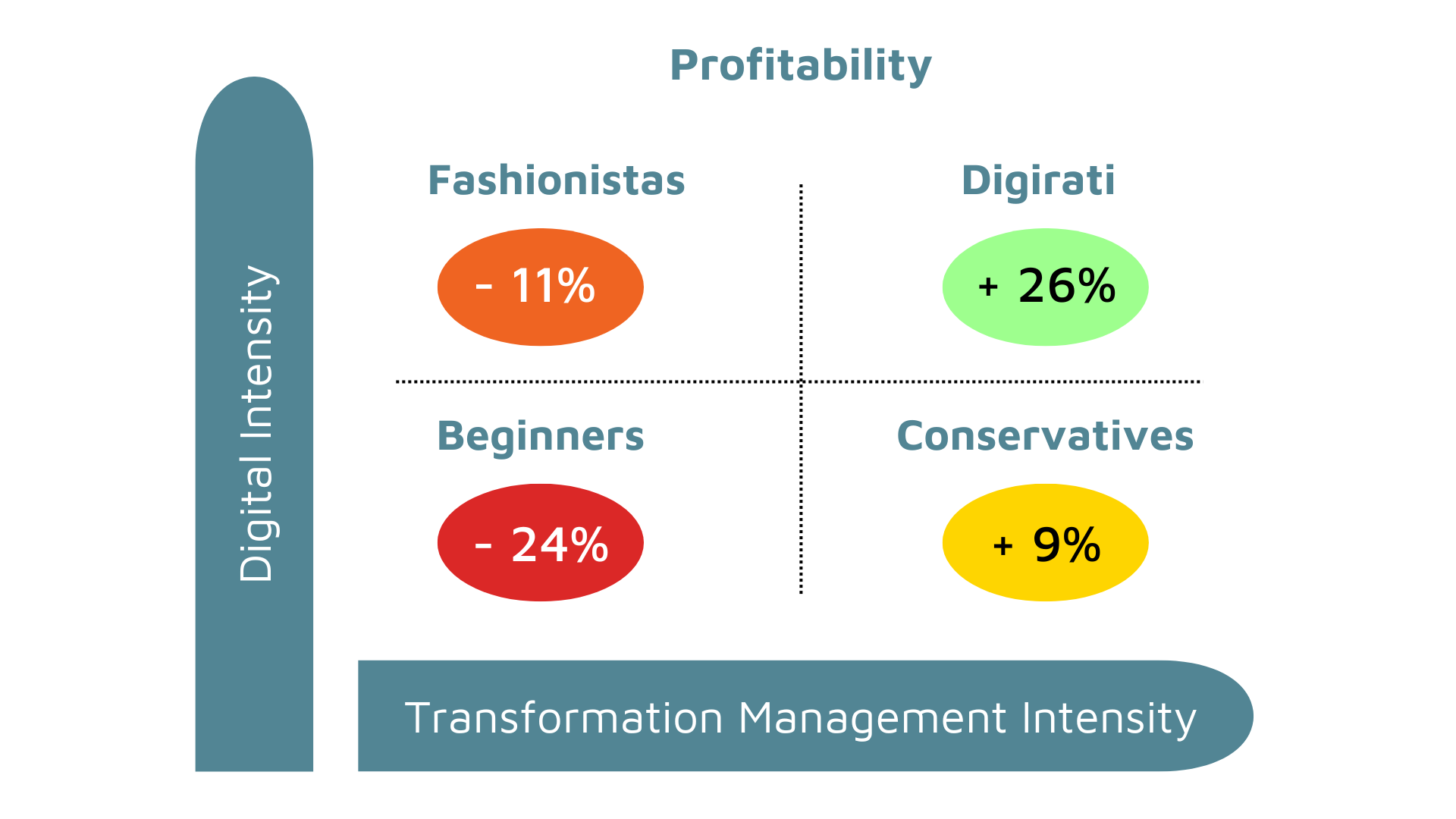Is Digital Immaturity Costing Your Organization?
Morgan Blackett - Marketing Strategist
28 Sep 2022
What Is Digital Maturity?
Digital Maturity is defined by two dimensions. Digital Intensity and Transformation Management Intensity. Digital Intensity refers to technology investments that change how an organization operates. The best firms coordinate digital initiatives in a cohesive and focused strategy. Focused on either customer engagement or digitized solutions. Transformation Management Intensity is about leadership capabilities that are needed to drive digital transformation in the organization. Including a compelling vision, and ongoing governance, engagement, and funding (Babin, 2022).
Four Types of Digital Maturity
The four types of digital maturity are:
- Beginners
- Conservatives
- Fashionistas
- Digirati

Beginners: Beginners are organizations where management is skeptical of the value that advanced digital technologies can add. Digital culture is low to non-existent in such an organization. Industry examples are Pharmaceuticals, Consumer Packed Goods, and Manufacturing.
Conservatives: These are organizations that have a strong digital culture but they do not have the digital capabilities to fully capitalize on their vision. Industry examples are Insurance and Utilities. An overarching digital vision exists.
Fashionistas: Fashionistas can be categorized as organizations that have advanced technology in silos but they have no organization-wide digital vision and culture. Industry examples include Travel, Hospitality, and Telecom.
Digirati: These are organizations that have a strong digital culture that is cultivated by leaders who understand the importance of technology in creating value for the company. Industries in this category are high technology, banking, and retail.
Profitability and Digital Maturity
Digital Maturity has implications for your organization’s profitability. Studies have shown that organizations that are Digirati tend to outperform their competitors by 26%. Conservative organizations outperform their competitors by 9%. Fashionistas and Beginners underperform in comparison to their competitors by -11% and -24%, respectively. Therefore, Digital Maturity is not simply a matter of technology but also a matter of profitability in the marketplace. Similarly, Digital Maturity has implications on the market evaluation of an organization. Digirati organizations have a higher market value than competitors by 12%. Conservative organizations have a higher market value than competitors by 7%. Fashionistas and Beginners have a lower market value than their competitors by -12% and -7%, respectively (Babin, 2022)

How Can Your Organization Become More Digitally Mature?
As you have read along, you have probably thought about where your organization lands in this matrix. If it is a Digirati, you should feel proud and know that your organization is on the right path not only from a technological perspective but from a profitability and market value perspective. However, if your organization is a Beginner or a Fashionista then it is quite clear that your organization is at risk of being outperformed by more digitally mature competitors.
As a beginner, your organization is low on digital intensity and transformation management intensity. It is critical to take note that an organization should not blindly start investing in advanced technology. That will simply move you from a Beginner to a Fashionista and you will still not be outperforming your competitors in profitability or market value.
The most impactful change an organization can make is by improving its Transformation Management Intensity. This means that leaders must improve their capabilities to drive digital transformation within their organizations. This will take you from a Beginner to a Conservative and therefore give your organization a better chance of outperforming its competitors in terms of profitability and market value.
Our Composable Coaching services provide the resources and guidance necessary for your organization to improve its Transformation Management Intensity. You will have the expertise of developers with over a decade of experience, several multiple-award-winning Sitecore MVPs, CX Architects, and Senior Customer Advocates who can work with you in partnership to guide your organization to becoming more digitally mature.
References
- Babin, R. (2022, September 12). Lecture 1 [28-32]. Ted Rogers School of Management MBA, Toronto Metropolitan University.
- “The Digital Advantage: How digital leaders outperform their peers in every industry”, Capgemini Consulting and MIT Center for Digital Business, 2012



Share on social media